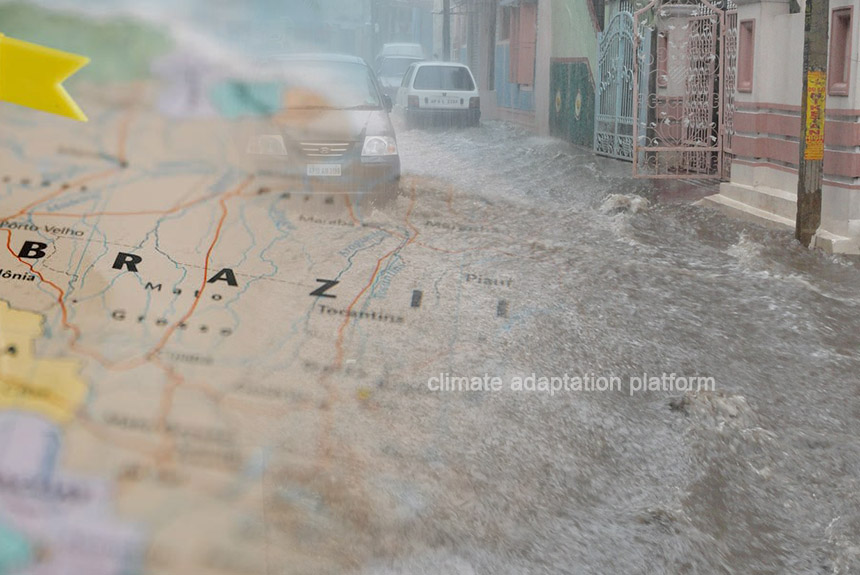Almost every city in Brazil’s southernmost state, Rio Grande do Sul, had been hit by devastating floods after a week of record-breaking rainfall in early May, resulting in an environmental and humanitarian catastrophe.
At least 160 people died because of the floods, and many others are still missing. More than 2.3 million Brazilians form the 469 municipalities affected by what the government describes as a “climate disaster”.
The ongoing El Niño weather phenomenon has been identified as a key factor in the record-breaking rainfall and subsequent flooding that began on April 27, 2024, and continued into early May in Brazil’s southern state. This weather pattern, characterised by unusually warm water in the Pacific Ocean, has increased humidity and rainfall, exacerbating the flooding situation (2024 Rio Grande, 2024).
A blessed country
Brazil believes it is a “blessed country” because natural disasters like hurricanes, earthquakes, and volcanic eruptions do not occur there. However, other disasters, natural or otherwise, that have impacted the country due to human actions are beginning to chip away at this narrative. Several regions in the country have been affected by landslides and floods caused by torrential rains in the last decade.
A 2011 Flood Risk Brazil study shows that river and flash floods combined with landslides are Brazil’s most frequent and costly natural disasters, costing the country’s economy hundreds of millions of dollars annually. Climate change is projected to increase the number of Brazilians exposed to floods to 6.5 million by 2030. The report identifies Brazil’s southeast, northeast, and south as likely to be the regions most severely affected by this.
Rapid urbanisation increases flood risk and vulnerability, but preventative adaptation measures like drainage, hillside stabilisation, urban planning that directs developments outside of flood—and landslide-prone areas, early warning, and awareness campaigns could reduce losses and vulnerabilities.
The World Resource Institute (WRI) article notes that the southern region of Brazil has already been hit by five extratropical cyclones in the last 12 months, a situation worsened by a strong El Niño in 2024. It adds that intense rainfall and prolonged droughts are increasingly becoming Brazil’s new reality, making urban preparedness an urgent task (Fontes, 2024).
The article says that despite Brazil’s public warnings of risks from extreme rainfall, sea level rise, and droughts, provided by its public institutions like the National Institute for Space Research (INPE) and its knowledge of solutions, risk reduction measures are still insufficient in the country.
Fontes (2024) says many regions still rely on 20th-century infrastructure focused almost solely on concrete and steel instead of shifting to 21st-century infrastructure that utilises nature-based solutions — things like restoring degraded forests to provide a buffer against floods and erosion or protecting wetlands to absorb excessive rainfall. These new solutions, including urban land use management aligned with housing policies, require significant climate adaptation and prevention investments (Fontes, 2024).
Flooding has led to another health risk
A waterborne leptospirosis disease outbreak followed after the flooding in Rio Grande do Sul. The BBC reports that four have died after contracting the illness. At least 50 cases have already been confirmed, and as many as 800 suspected cases are currently being investigated, with the number of cases expected to rise because many cities are still under water.
Leptospirosis cases can increase after hurricanes or floods when people may have to wade through contaminated water or use it for drinking or bathing. Animal urine from rodents, dogs, livestock, and wildlife in the soil and other surfaces can run into floodwater, contaminating it. Infection generally occurs through cuts and cracks in the skin or the mucous membranes of the eyes, nose, or mouth.
The flood disaster in the southern state of Brazil and the leptospirosis outbreak that followed remind us of the existential threats of climate change and the urgent need for action to reduce our carbon emissions and strengthen resilience to climate change impacts through implementing climate adaptation strategies and measures.
A Newsweek opinion piece suggests how the country can go forward after the tragic floods, “As Brazil’s southern region begins the process of rebuilding and recovery, it is crucial that the government and local authorities prioritise sustainable and resilient solutions. This includes investing in green infrastructure, such as urban forests and permeable surfaces, to improve water absorption and reduce the risk of future floods. Additionally, strengthening building codes and enforcing strict regulations on land use and development can help mitigate the impact of extreme weather events.”
Sources:
Cursino, M. (26 May, 2024). Waterborne disease outbreak after Brazil floods kills four. BBC. Retrieved from https://www.bbc.com/news/articles/cq559gexxy5o
Fontes, C. (2024, May 10). Tragic Flooding in Brazil; a Wake-up Call for the World. World Resources Institute. Retrieved from https://www.wri.org/insights/tragic-flooding-brazil-building-resilience?apcid=0065832ea341868dfb335e00&utm_campaign=wridigest&utm_medium=email&utm_source=wridigest-2024-05-22
Lopes, M. & Figueirôa, S. (2020, March). The History of Geology Meets Disasters: A Brazilian Perspective. Isis. Retrieved from https://www.journals.uchicago.edu/doi/epdf/10.1086/707820
Bresch, D. (2011). Flood risk Brazil (full study). Retrieved from https://www.researchgate.net/publication/253327670_Flood_risk_Brazil_full_study
2024 Rio Grande do Sul Brazil Floods. (2024, May 8). CDP. Retrieved from https://disasterphilanthropy.org/disasters/2024-rio-grande-do-sul-brazil-floods/#:~:text=The%20continuing%20El%20Ni%C3%B1o%20weather,a%20state%20in%20southern%20Brazil.
Brazil’s Climate Change Catastrophe | Opinion. (2024, May 24). Newsweek. Retrieved from https://www.newsweek.com/brazils-climate-change-catastrophe-opinion-1903681



Leave a Reply